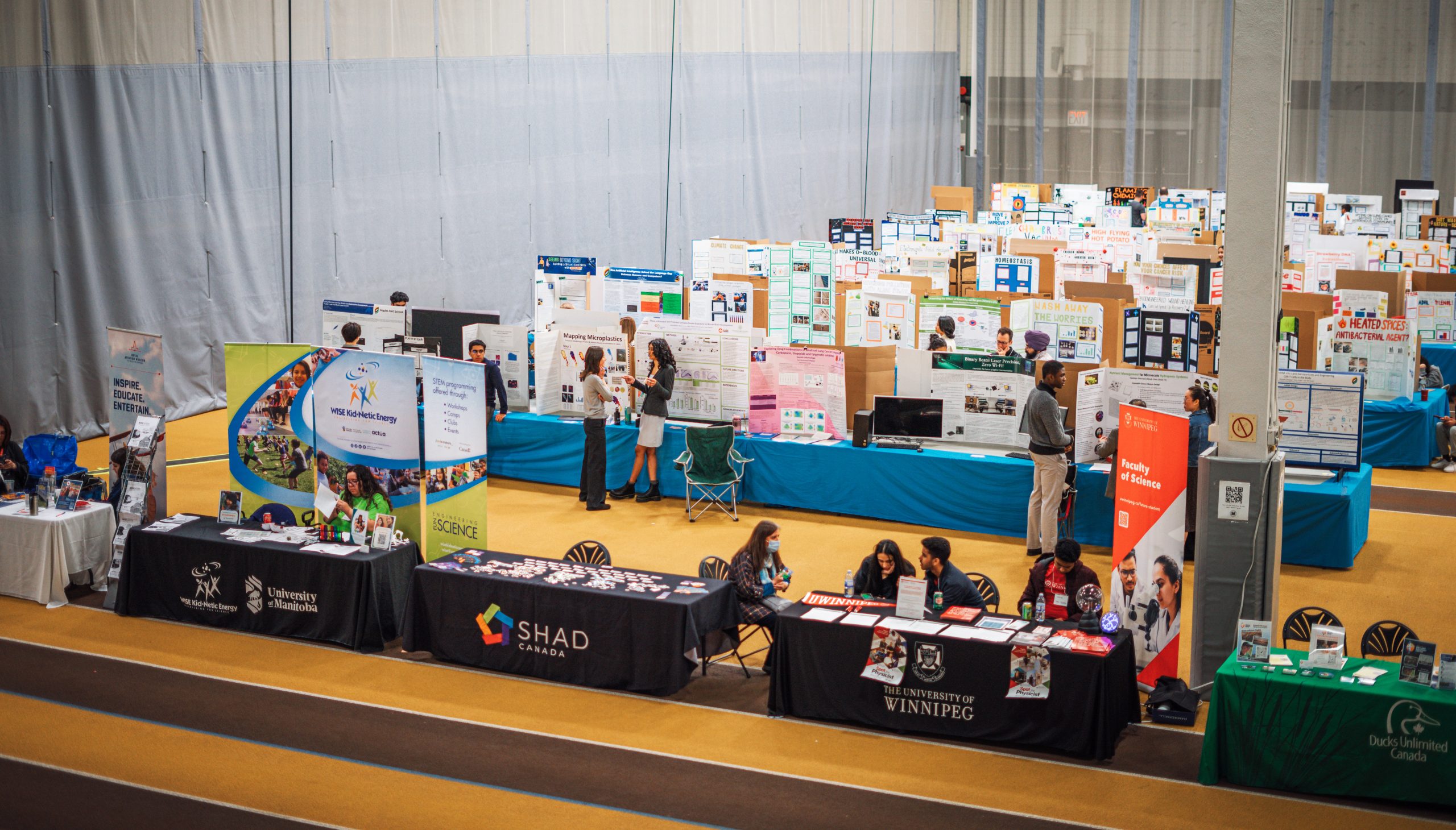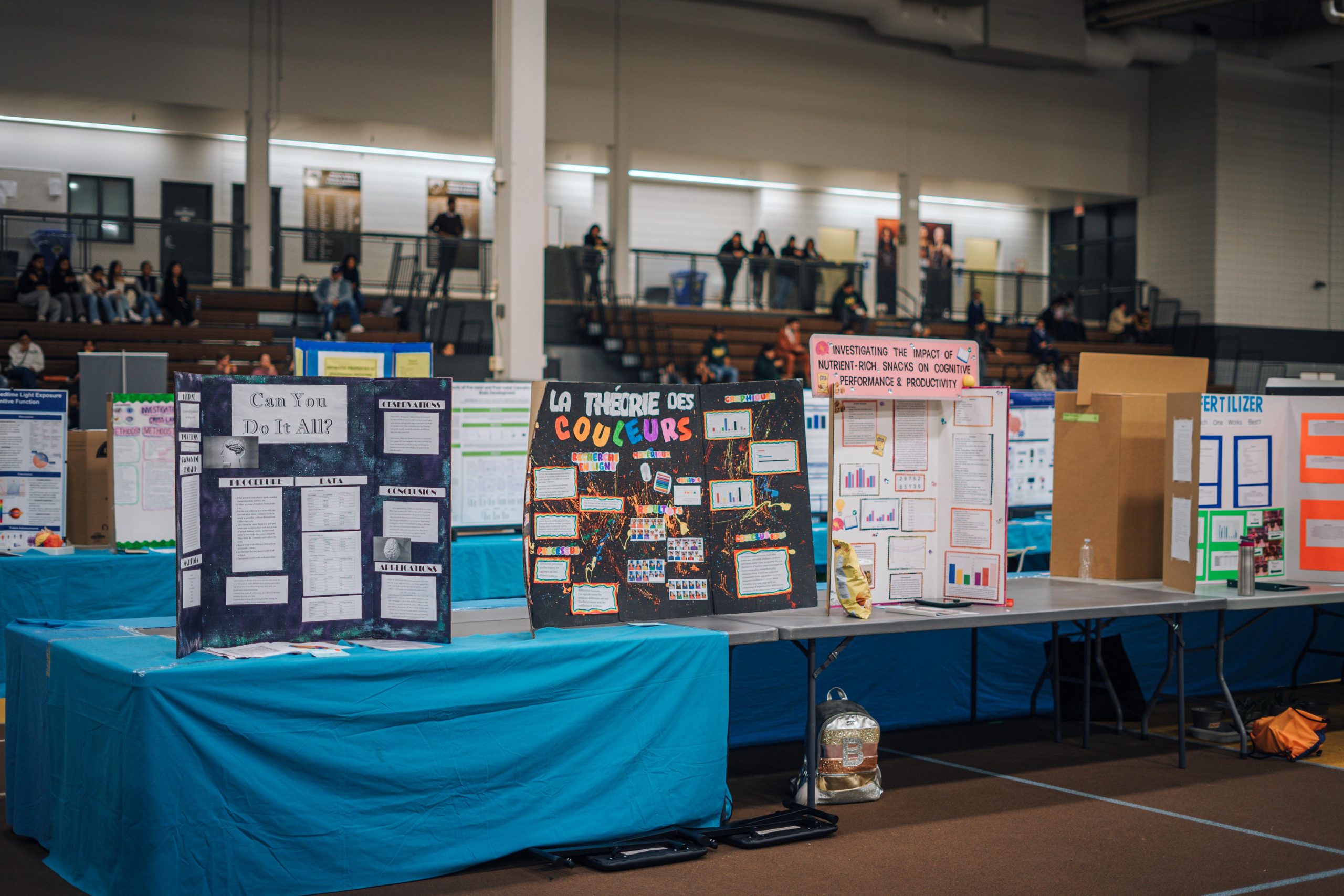Over 300 students from Grade 4 to 12 gathered to participate in the 54th Manitoba Schools’ Science Symposium (MSSS), showcasing their research in the biological and physical sciences.
The three-day symposium, which lasted from April 11 to April 13, was held in the U of M’s Max Bell Centre and is the largest annual science event held for students in the province, according to the MSSS website.
Rohan Sethi, a co-chair of the MSSS planning committee and U of M student, stated that the symposium is a “platform for participants to showcase their ingenuity, their intellect, their creativity and their curiosity.
“Our goal is to provide a platform that can foster the next generation of scientists, researchers, innovators, physicians, engineers and so forth,” said Sethi, who first got involved with the MSSS as a participant in Grade 4 and has been on the MSSS planning committee for three years.
He added the symposium provides participants “an opportunity to be messy, to get their hands on and to understand the scientific method in a way that will encourage future growth in the field of science.”

Project boards were set up in the James Daly Fieldhouse of the Max Bell Centre. Photo by Zulkifl Rafah
Projects ranged from research into AI to hydroponics to combatting cancer, covering various academic disciplines.
Sethi explained that the highest number of participants peaked before the COVID-19 pandemic, adding that the MSSS hopes to once again reach — and even exceed — those participation levels.
He stated that some students will start their project a month or two in advance, whereas others may take several months or years, “especially our senior projects, who are working in labs, some of which are affiliated with the U of M.”
“There’s a lot of variance in terms of how long participants have spent on their projects,” he said, acknowledging that some returning participants are building on research work that they previously showcased at the symposium.

Ella Strachan, a grade 12 student at Grant Park High School, presented her research on mapping microplastics in Lake Winnipeg. Part of her project involved spending a month aboard the Namao research vessel. Photo by Zulkifl Rafah
Participants ranged from public schools and private schools, including schools from Northern Manitoba.
Sethi added that while science teachers may have assisted certain students in bringing their project to life, other students may have conducted their research independently from their school.
Project registration, set-up and student activities took place on April 11, followed by judging on April 12 and the awards ceremony on April 13.

Project boards were available for public viewing on Sunday, April 13. Photo by Zulkifl Rafah
Prizes valued at over $30K
Participants were interviewed by at least two judges who looked for project originality, scientific thought, presentation clarity and thoroughness of research.
“We also encourage students to be themselves, so we’re not looking at seeing if they have a script memorized, but more so how they can fluently engage with the judges to talk about what they’ve done,” said Sethi.
“This is also a skill that would part of their lifelong trajectory, public speaking, and so this is more than just about doing science. This is about trying to develop a person’s skill set.”
He stated that the judging committee consisted mainly of U of M faculty members, as well as wider community members and special awards judges from different organizations.
Prizes included medals, special awards, scholarships, program enrollments and trips totaling over $30,000, per the MSSS website.
Six projects were also eligible to qualify for the Canada-Wide Science Fair next month in Fredericton, according to Sethi.
The national science fair will be hosted at the University of New Brunswick from May 31 to June 7.

